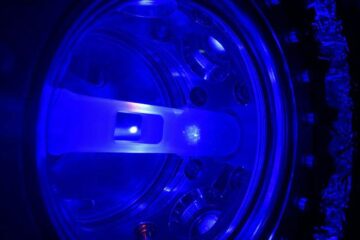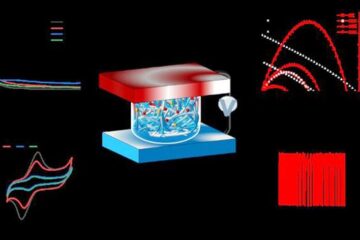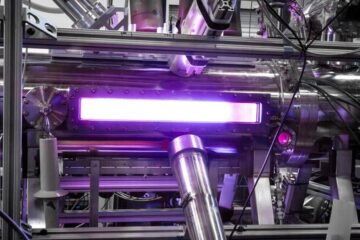Humboldt Fellow at NETZ: Nanocatalysts Made of Metallic Glass

Humboldt Fellow at NETZ: Dr. Shunxing Liang UDE/private
Metallic glasses are comparatively new in the glassy family. They combine the best of both materials. They conduct electricity like metals but have an internal structure like glass that is completely untypical of alloys:
Their atoms are not arranged in a regular lattice but are as mixed up as in our windows made of classic silicate glass. This chaotic structure makes the material e.g. stronger than traditional alloys (like steel and bronze), and thus provides a wider application potential.
New Generation of Nanocatalysts
“Because of their large surface compared to their volume, nanoparticles are, in general, very well suited for catalytic purposes”, explains Dr. Shunxing Liang. “Let alone those made of metallic glasses.”
His method of choice to synthesize these new generation of nanocatalysts is laser ablation in liquids. In this process, a laser vaporizes material from the selected substrate with ultra-short laser pulses. In the surrounding solvent, the material combines to form nanoparticles.
What sounds simple has never been achieved with the envisaged material: Dr. Liang aims to stabilize the disordered structure in the particles during their synthesis.
“It is an ambitious but promising plan”, says Dr. Sven Reichenberger, head of the junior research group on laser-based synthesis of nanomaterials for energy research, where the Alexander von Humboldt fellow takes part in.
“Within a few billionths of a second, we locally heat the materials to temperatures like those prevailing on the sun’s surface and then cool the ejected material back down to the ambient temperature just as quickly. This leaves the atoms no time to rearrange in a regular lattice.”
Dr. Reichenberger’s laboratories are located in the NETZ, a research building dedicated to the development of materials for energy technology. The microscopy center in the basement makes it possible to analyze samples on the spot and thus improve the production process step by step.
Dr. Liang studied mechanical engineering at South China Agricultural University before completing his master and PhD degree at Edith Cowan University in Perth, Australia. Back then, he mainly focused on metallic glasses and their advanced application in wastewater treatment.
Further Information:
https://www.uni-due.de/reichenberger-group/
Editor: Birte Vierjahn, Tel. +49 203/37 9-8176, birte.vierjahn@uni-due.de
Dr. Shunxing Liang, Technical Chemistry I, + 49 203/37 9-8217, shunxing.liang@uni-due.de
Dr. Sven Reichenberger, Technical Chemistry I, +49 203/37 9-8116, sven.reichenberger@uni-due.de
Media Contact
All latest news from the category: Materials Sciences
Materials management deals with the research, development, manufacturing and processing of raw and industrial materials. Key aspects here are biological and medical issues, which play an increasingly important role in this field.
innovations-report offers in-depth articles related to the development and application of materials and the structure and properties of new materials.
Newest articles

Superradiant atoms could push the boundaries of how precisely time can be measured
Superradiant atoms can help us measure time more precisely than ever. In a new study, researchers from the University of Copenhagen present a new method for measuring the time interval,…

Ion thermoelectric conversion devices for near room temperature
The electrode sheet of the thermoelectric device consists of ionic hydrogel, which is sandwiched between the electrodes to form, and the Prussian blue on the electrode undergoes a redox reaction…

Zap Energy achieves 37-million-degree temperatures in a compact device
New publication reports record electron temperatures for a small-scale, sheared-flow-stabilized Z-pinch fusion device. In the nine decades since humans first produced fusion reactions, only a few fusion technologies have demonstrated…





















